Noise Sources

Airport and Aircraft Noise
The noise generated by airplanes and airport installations is more complex than the noise originated by trains, traffic or industrial machineries.
As for the airplane noise, a series of factors must be taken into account: airplane type, payload, trajectory, phase of flight (takeoff, landing, normal flight), weather conditions. Multiple components contribute to the overall noise emitted by an aircraft: aerodynamic, engine and propulsion mechanisms, aircraft mechanical systems along the airframe (e.g., wings, flaps, landing gears).
Other sound sources can be identified within an airport, such as maintenance and emergency vehicles, acoustic signaling systems, baggage and passenger transportation systems, etc.
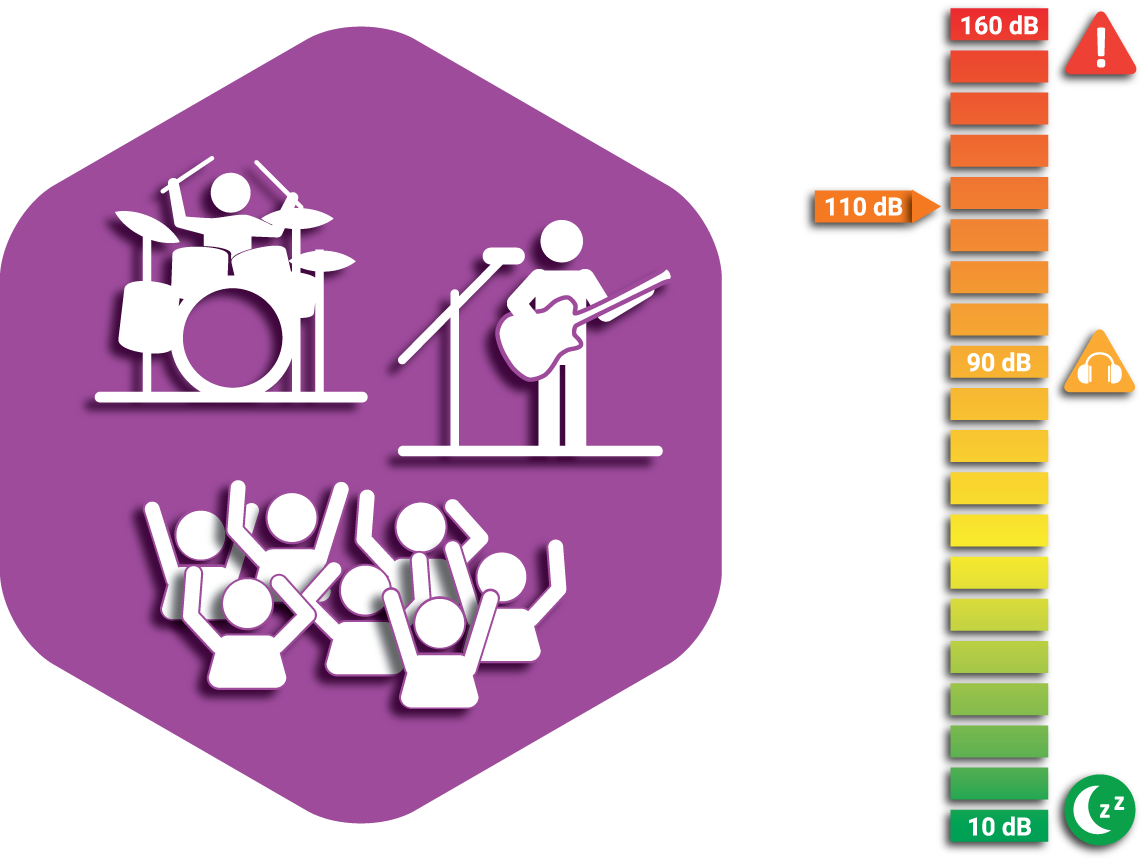
Concert Noise
Leisure time activities such as concerts and festivals may represent a significant source of noise, especially when rock and pop music are played. Recent studies highlighted how years of exposure to loud music played at discotheques and during concerts may induce irreversible noise-induced hearing loss in both ears of at least 10dB at 3 kHz.
Recent tests activities performed during music festivals highlighted how the individual sound exposure per evening varied between 90 and 115 dB(A), with an average exposure of 100 dB(A) and prolonged peaks of 110 dB(A).
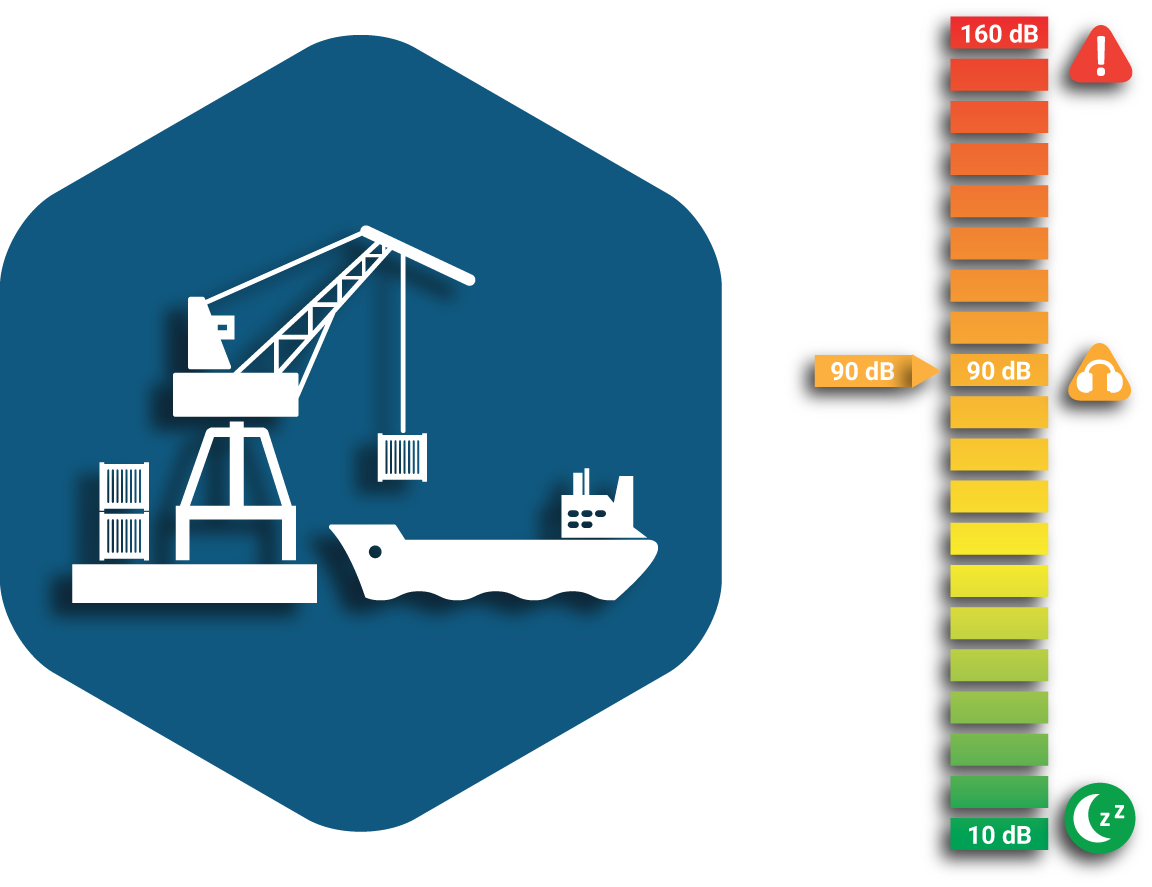
Harbour and Ship Noise
Noise coming from harbors where unloading and loading of containers take place can be very disturbing. Cargo harbors as well as passenger harbors typically host a variety of noise sources: moving vehicle and machineries, ship engines and signaling systems (e.g., horns, sirens, whistles) are just some examples.
Generally speaking, a direct correlation between the dead weight tonnage (DWT) of a ship and her sound power level can be established. Moreover, smaller ships have high-speed engines with higher frequency content in noise and smaller ventilation systems.
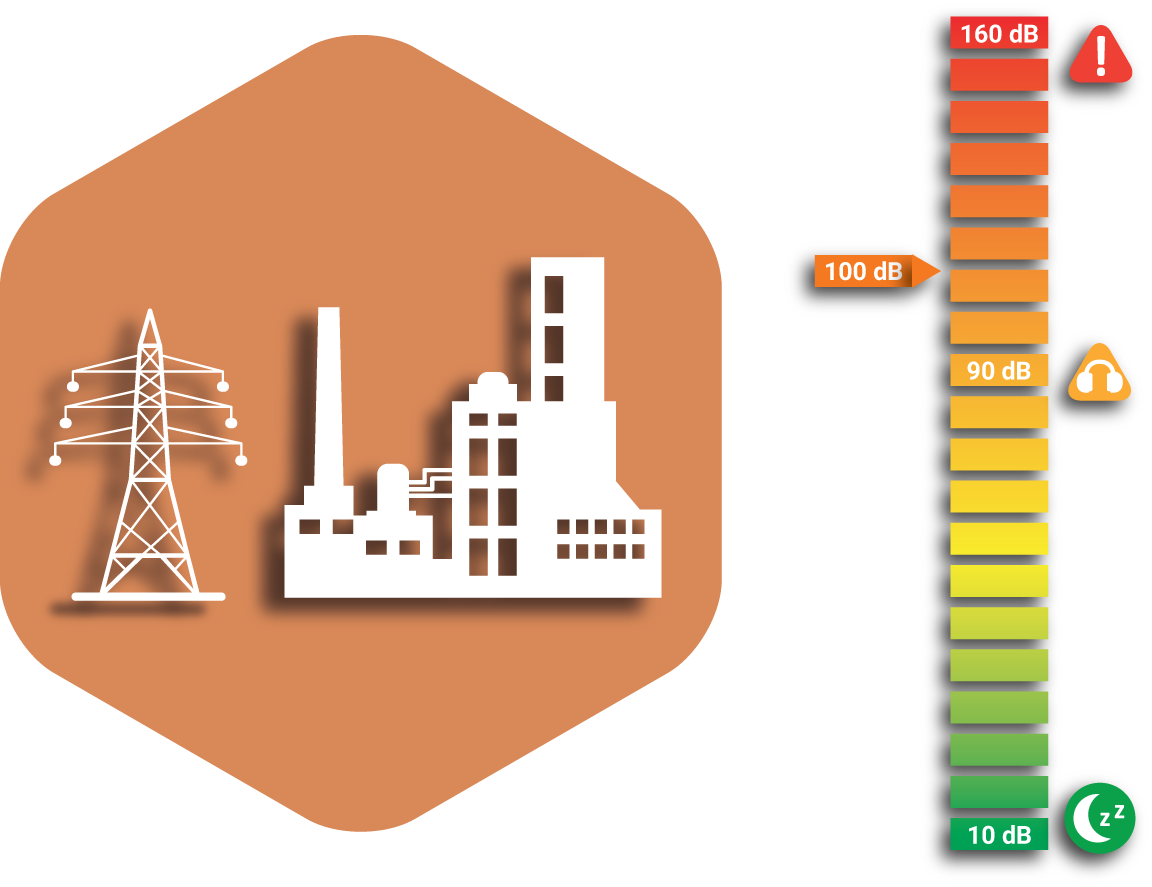
Industrial Noise
The noise cause by an industrial plant (or by a part of an industrial plant) and perceived in a surrounding residential area is not easily measurable, since it cannot be easily separable from the other sources (e.g., other plants, traffic, etc.) due to the distance between the plant itself and the residential area.
However, this kind of noise is determined by a series of industrial machineries and equipment, such as: rotating electrical machines, transformers, rotors and stators, combustion engines, compressors, electrical switch gears, ventilation fans, vibrating panels, HVAC systems, office machines, turbines, hydraulic and pneumatic tools and pumps.
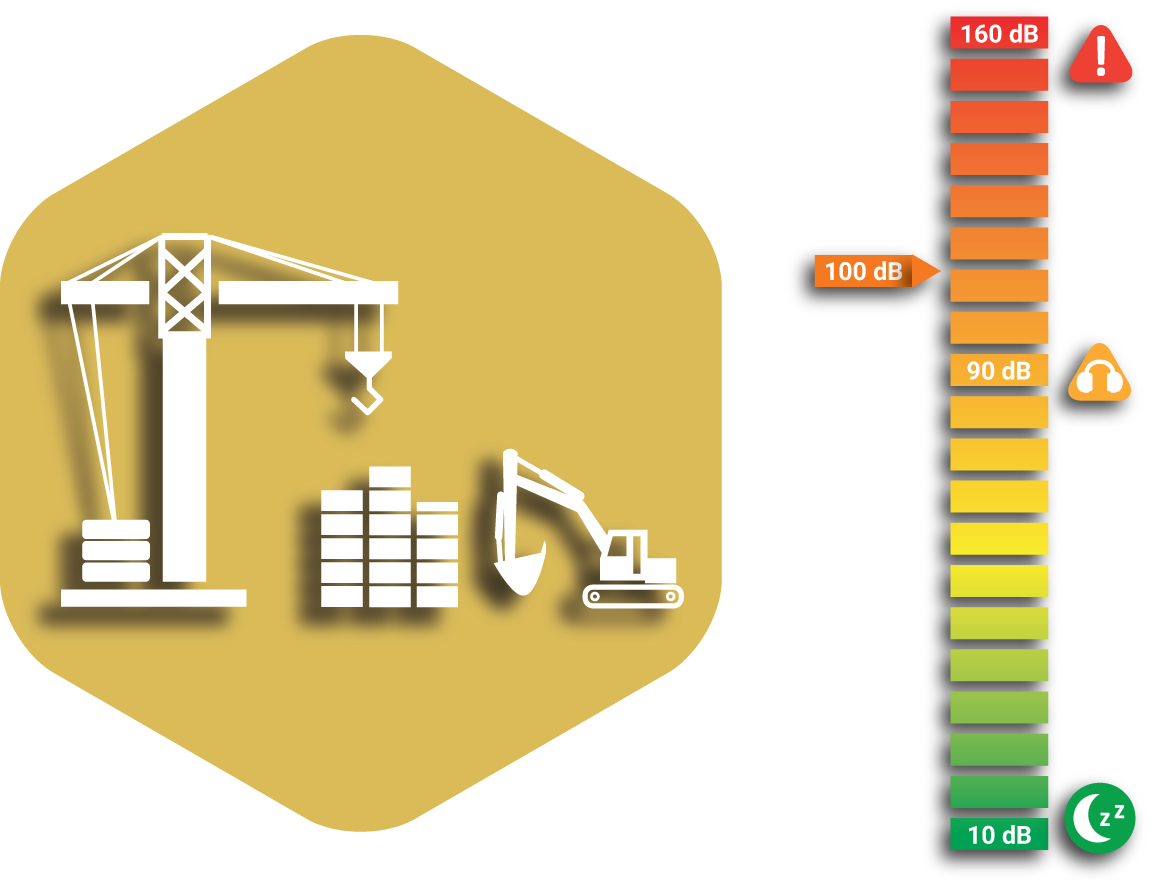
Roadwork and Construction Site Noise
Road works and construction sites represent typical noise sources within the urban framework. Most road works are carried out by municipal companies for asphalt and road pavement construction or repairing interventions as well as by utility companies (e.g., gas, electricity, water, telephone, cable services).
Construction works also add inevitable noise contributions to the overall loudness of the urban environment, especially due to their relevant duration in time and the heterogeneity of possible interventions. Citizens can experience noise in different situations: construction of new buildings, renovation of existing buildings, demolition of buildings, installation and/or repairing of utilities.
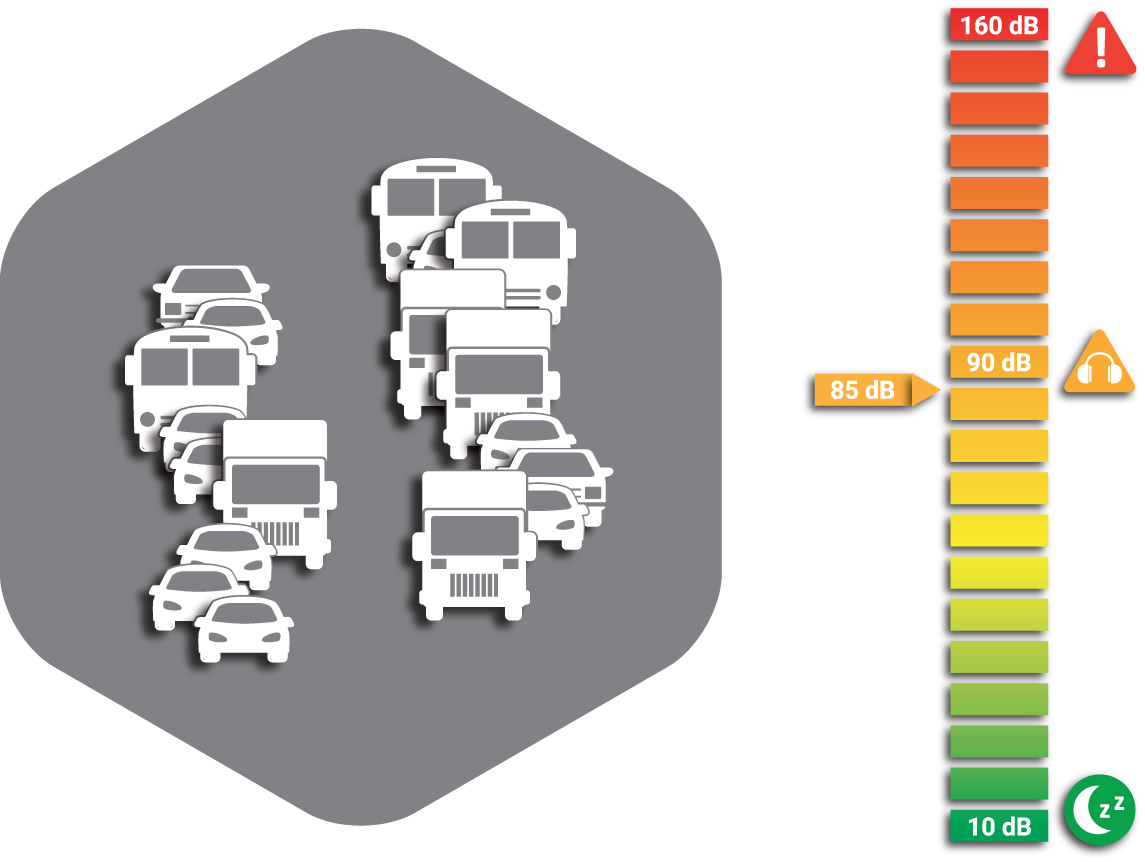
Traffic Noise
Traffic noise is typically due to heavy vehicles (e.g., trucks, haulers, tractors, tankers, trolleys, buses, etc.), light vehicles (e.g., cars, vans, minivans, pickups, etc.), motorcycles and special vehicles having additional noise sources (e.g., ambulances, fire trucks, police cars, etc.).
This kind of noise is directly originated by multiple components: engine and transmission, rolling tires over the asphalt, aerodynamic, braking systems, additional engines (e.g., radiators, air-conditioners, etc.) and other vehicle-mounted devices (e.g., horns, sirens, bells, whistles, etc.).
In real scenarios, noise levels are given by a mix of heterogeneous traffic conditions: different speed of vehicles, mix of different vehicles types, different vehicle age, etc.
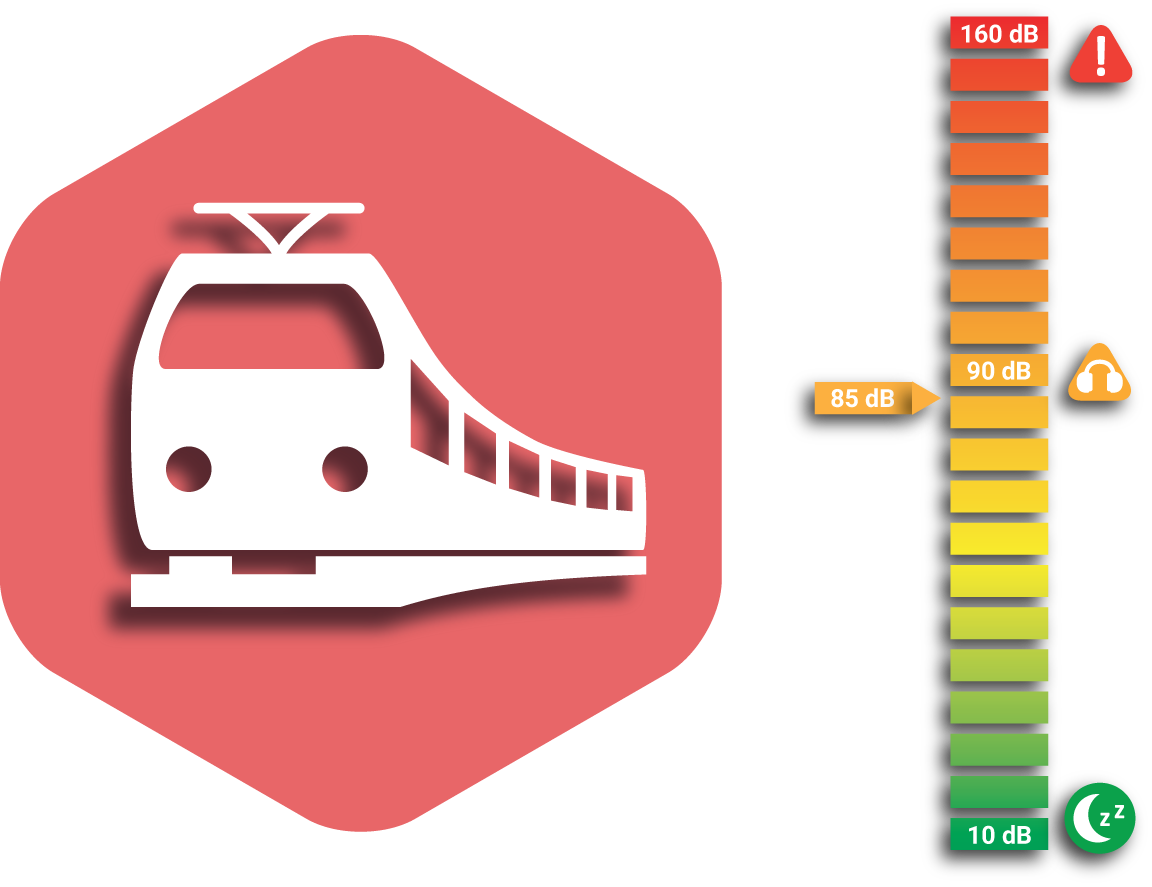
Railway and Train Noise
Railway noise is comparable to the noise generated by airplanes and very different from the noise originated by road traffic and industrial machineries. This is mainly due to the fact that this kind of noise is not continuous but it is characterized by a series of single “events”, which happen whenever a train passes by. These events may last differently in time and they are typically very loud if compared to other anthropic noise sources.
Railway noise is given by the sum of multiple components: locomotive engines, aerodynamic noise, coupling between wagon wheels and rails, coupling between pantograph and power line, acoustic signaling systems (e.g., horns, bells, whistles, sirens), braking systems and other auxiliary equipment (e.g., compressors, air conditioning systems, etc.).